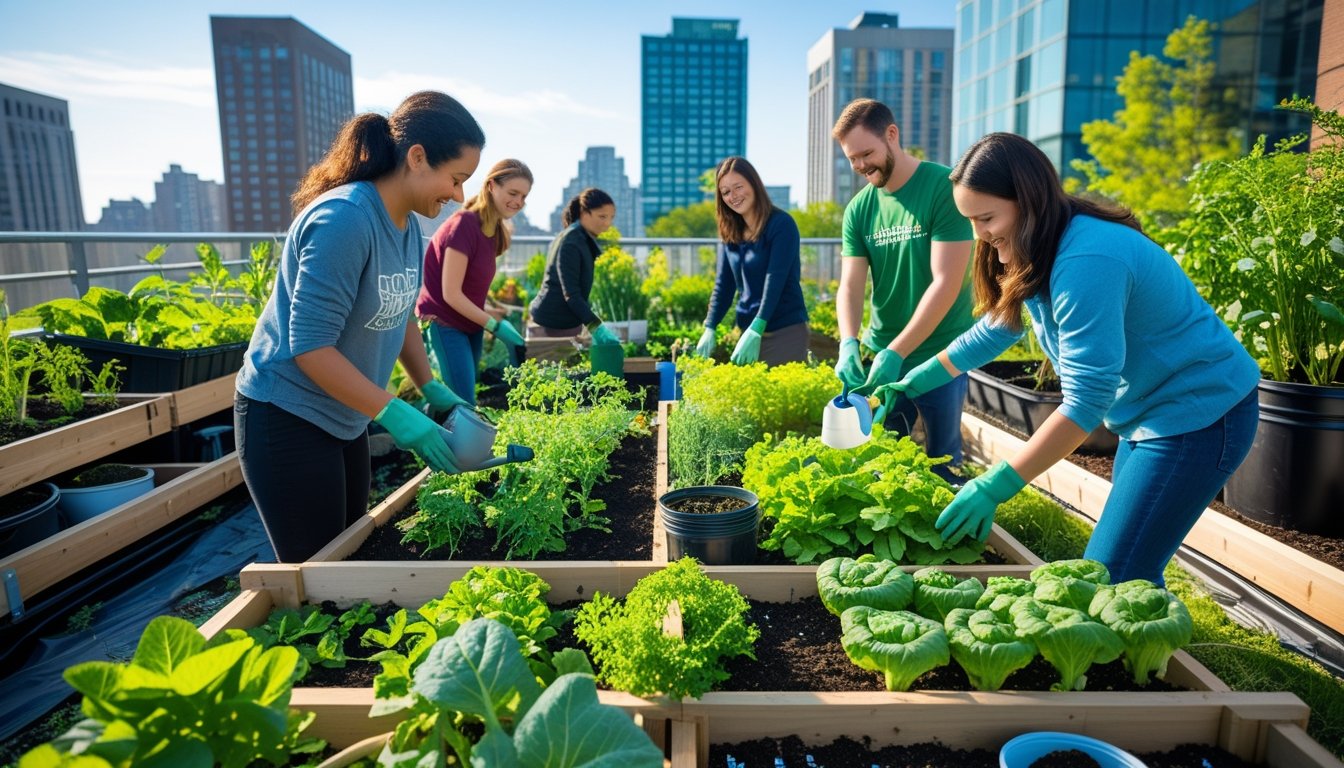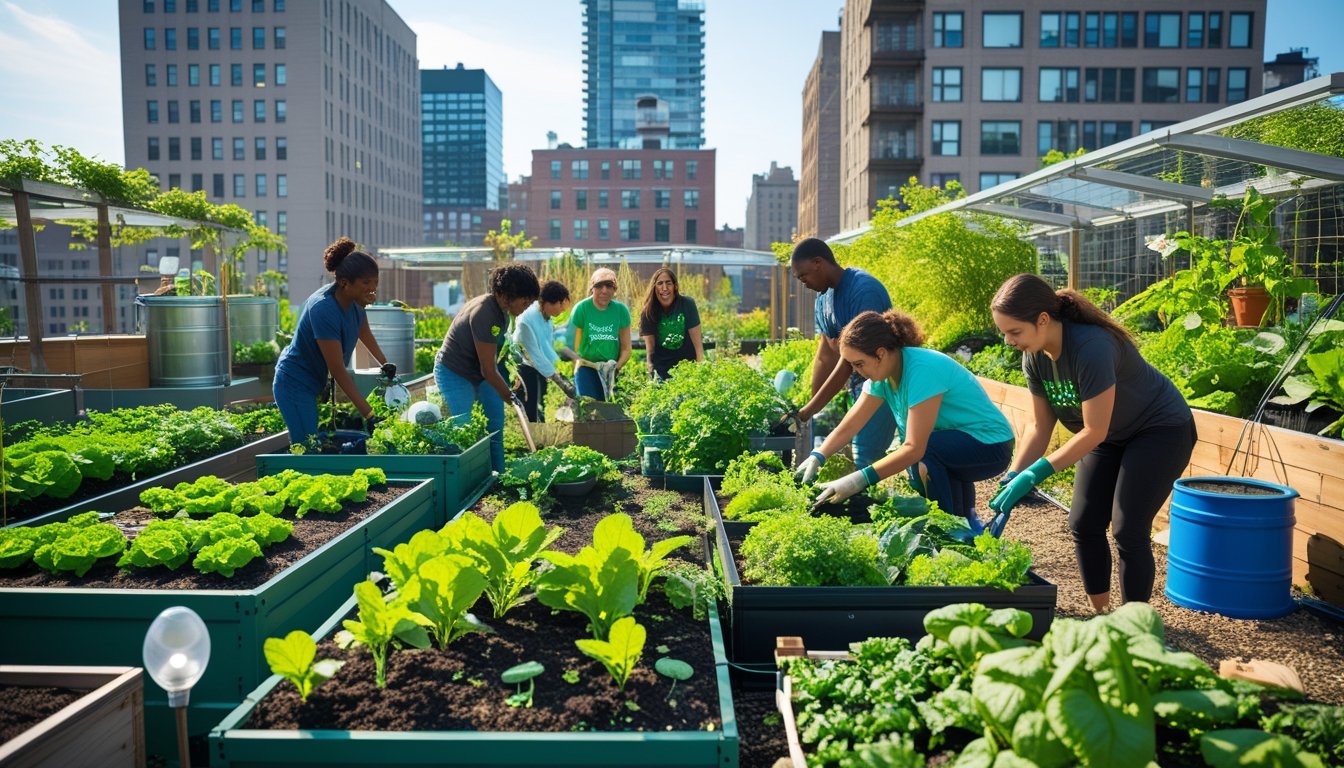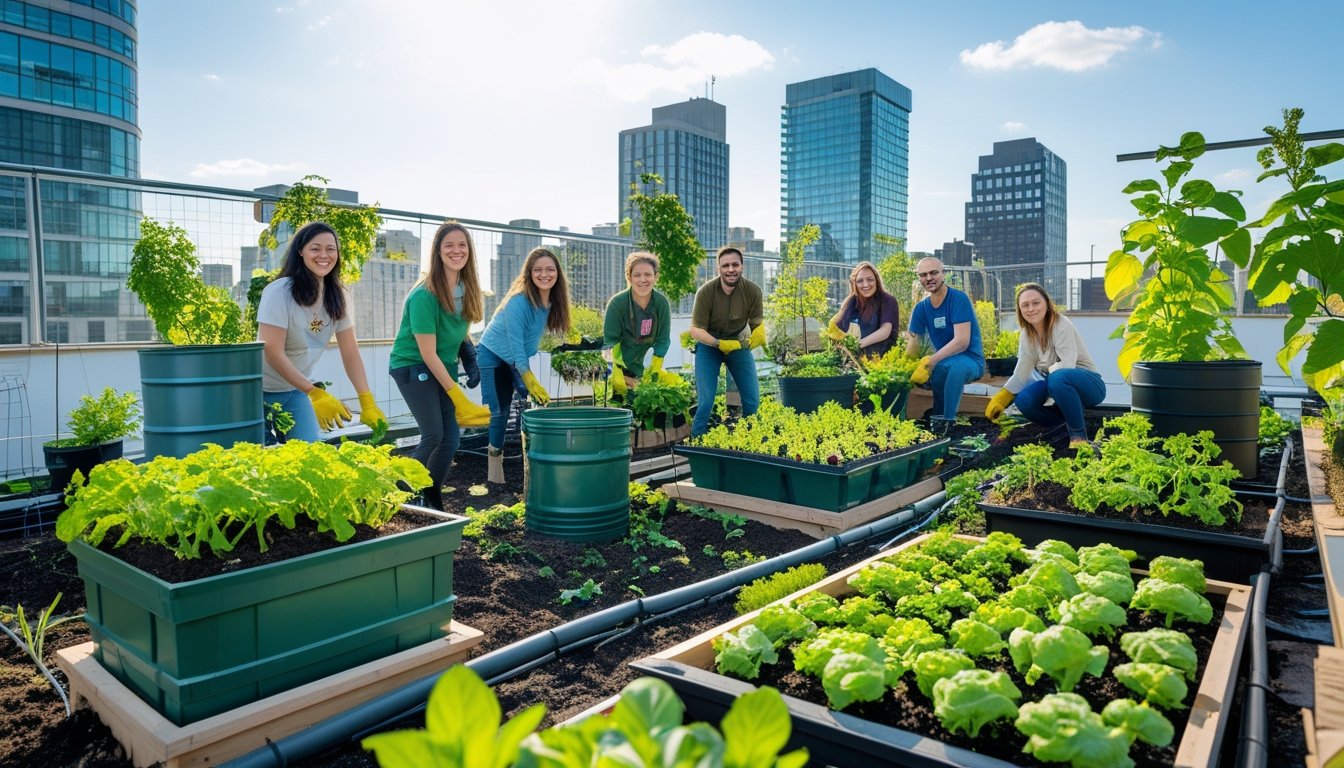Late updated: 26 Sep 2025 10:09
Written by: Sarah Hollister
Eco-Friendly Tips For Sustainable Urban Gardening: Effective Strategies For Green Spaces
Engaging in eco-friendly urban gardening transforms our confined spaces into vibrant sanctuaries for nature amidst the concrete jungle. By incorporating sustainable practices, we can conserve resources, promote biodiversity, and create flourishing gardens, even in the tightest corners of our cities. This movement not only helps in producing fresh food but also brings a sense of peace and community—reconnecting us with nature.

Urban gardening is more than a hobby; it's a step towards a greener planet. Through innovative techniques like composting and rainwater harvesting, we can significantly reduce our carbon footprint. By prioritising native plants and organic materials, we protect the local ecosystem and contribute to a healthier environment.
Bringing nature closer in urban settings also nurtures our well-being. The simple acts of planting and nurturing serve as a reminder of our connection to the earth. As we dive into practical tips and sustainable practices, we'll explore how anyone can cultivate an eco-friendly space in the heart of the city.
Key Takeaways
- Sustainable urban gardening promotes resource conservation and biodiversity.
- Composting and choosing native plants are vital eco-friendly practices.
- Urban gardening enhances community ties and personal well-being.
Core Eco-Friendly Practices for Sustainable Urban Gardening

To create a sustainable urban garden that thrives, we focus on nurturing healthy soil, practising efficient water use, and choosing sustainable materials for planting. Let's explore practical tips for transforming our urban spaces into environmentally friendly havens.
Building and Maintaining Healthy Soil
Healthy soil is the foundation of a resilient garden. We can enhance soil health through practices such as mulching, which helps retain moisture and suppress weeds. Adding organic matter like compost improves soil structure and nutrient content. To maintain soil fertility, practise crop rotation and avoid chemical fertilisers, opting instead for natural options like bone meal or fish emulsion. Testing the soil regularly informs us of its pH and nutrient levels, enabling us to make informed amendments. Companion planting, which involves growing mutually beneficial plants together, also supports a dynamic and balanced ecosystem.
Composting Kitchen and Garden Waste
Composting is a practical way to reduce waste and provide nutrient-rich matter for the garden. Kitchen scraps, like fruit peels and vegetable ends, along with garden waste, such as leaves and grass clippings, make excellent compost materials. We can employ a compost bin to manage this process effectively. To achieve a good balance, mix green materials, rich in nitrogen, with brown materials, rich in carbon. Regularly turning the compost aerates it, speeding up decomposition. Once ready, this compost enriches the soil, boosting plant growth and health.
Implementing Water Conservation Techniques
Water conservation is vital in urban gardening. Rainwater harvesting using a rain barrel allows us to collect and store rainwater for later use, reducing dependence on municipal water. Installing a drip irrigation system ensures water reaches plant roots directly, minimising evaporation and runoff. We can further conserve water by mulching, which reduces evaporation from the soil surface. Efficient water usage not only conserves this vital resource but also lowers water bills, making it both environmentally and economically beneficial.
Selecting Sustainable Containers and Upcycled Planters
Choosing sustainable containers is crucial for eco-friendly urban gardening. We can opt for planters made from recycled or biodegradable materials, which reduce landfill waste. Upcycling everyday items like wooden crates, tin cans, or old buckets into planters adds character to our gardens while promoting sustainability. When selecting containers, consider their size in relation to the plants' growth requirements, ensuring adequate space for root development. Proper drainage is essential to prevent waterlogging and promote healthy plant growth.
By incorporating these core practices, we turn urban spaces into thriving, sustainable gardens.
Eco-Conscious Gardening Techniques for Urban Spaces
Eco-friendly urban gardening merges effective sustainable practices with limited space to create thriving green areas. By integrating smart techniques such as vertical gardening and sustainable pest control methods, we can transform city environments into lush, productive spaces.
Smart Vertical and Small-Space Gardening Approaches
In densely populated areas, making the most of limited space is essential. Vertical gardens offer an efficient solution, allowing us to grow a variety of plants on walls and trellises. This method maximises space and enhances the urban landscape with greenery. In addition to vertical gardening, container gardening and implementing drip irrigation systems help conserve water while ensuring plants receive adequate moisture.
Efficient space use might involve tiered shelving or utilising balcony railings. Incorporating drip irrigation minimises water waste and caters to the specific needs of each plant. Embracing these methods can lead to increased plant diversity, improved aesthetics, and productive urban gardens contributing positively to local ecosystems.
Sustainable Pest Management and Beneficial Insect Integration
Managing pests in an eco-friendly manner is crucial for a balanced garden ecosystem. Integrated Pest Management (IPM) combines strategies to minimise pest damage while reducing reliance on chemicals. By introducing beneficial insects like ladybugs, we can naturally control aphid populations without harming other species.
Natural solutions, such as diatomaceous earth, provide protection against garden pests. They offer non-toxic options resisting infestations. Insect hotels support biodiversity, providing habitats for pollinators and other beneficial insects. By fostering a healthy bug population, we maintain garden health and biodiversity without compromising our eco principles.
Practical Crop Selection, Rotation, and Companion Planting
Selecting crops wisely in urban gardening plays a key role in resource conservation. We should choose plants suitable for confined spaces and varying light conditions. Companion planting enhances growth and pest resistance by pairing crops with complementary neighbours.
Crop rotation limits nutrient depletion in the soil and disrupts pest cycles, keeping plantings vigorous over time. Think about pairing tomatoes with basil or corn with beans for productive growth partnerships. Employing these strategic arrangements contributes to a flourishing, sustainable urban garden that supports nutritious, fresh produce growth with minimal environmental impact.
Community Engagement in Urban Green Spaces
Urban green spaces thrive when the community is actively involved. Engaging with local communities through community gardens fosters collaboration and shared responsibility for the environment. These communal spaces offer a platform for exchanging tips and resources, which enhances gardening efforts and yields fresh produce for the neighbourhood.
By nurturing these spaces as social hubs, we create an atmosphere of community participation and shared ecological responsibility. Workshops and events can further promote sustainable practices, creating a ripple effect throughout the city. Active involvement in urban green spaces empowers us to improve local environments while building stronger community relationships.
Frequently Asked Questions

Our focus is on practical methods for urban gardening that enhance sustainability. We explore plant selection, composting, water conservation, native plants, waste reduction, and container gardening. These aspects are critical for cultivating eco-friendly gardens in urban environments.
What are the best plants to cultivate in a small urban garden for environmental sustainability?
In small urban gardens, it's advisable to grow native plants and climate-resilient crops. Native species are adapted to local conditions, thus requiring less water and maintenance. Incorporating edible plants like herbs and greens also promotes biodiversity and offers fresh produce.
How can composting be effectively integrated into an urban garden?
Composting can be seamlessly incorporated through compact bins or communal compost systems. By using kitchen scraps and garden waste, we create nutrient-rich soil. Ensuring proper aeration and moisture levels will optimise the composting process, even in limited spaces.
Which methods of water conservation are most effective for urban gardens?
Rainwater harvesting and drip irrigation systems are excellent for conserving water. Collecting rainwater reduces reliance on municipal supplies, while drip systems deliver water directly to plant roots. Mulching with organic material aids in water retention and minimises evaporation.
Can you explain the benefits of using native plants in an urban garden?
Native plants require fewer inputs like water and fertilisers. They promote local biodiversity by supporting native wildlife and pollinators. Their adaptation to the environment reduces the garden’s ecological footprint, making them a sustainable choice for urban gardening.
What are the most efficient ways to reduce waste in urban gardening?
Adopting practices like composting and recycling hardscape materials helps minimise waste. We can reuse containers and practice crop rotation to maintain soil health. Choosing plants that offer multiple yields reduces the need for frequent replanting, leading to less waste.
How does container gardening contribute to a sustainable urban green space?
Container gardening maximises space and resources. It allows the use of recycled materials and enables flexible garden arrangements. Additionally, it supports micro-environments suitable for varied plant species, aiding in urban biodiversity and creating pockets of green amidst concrete.
